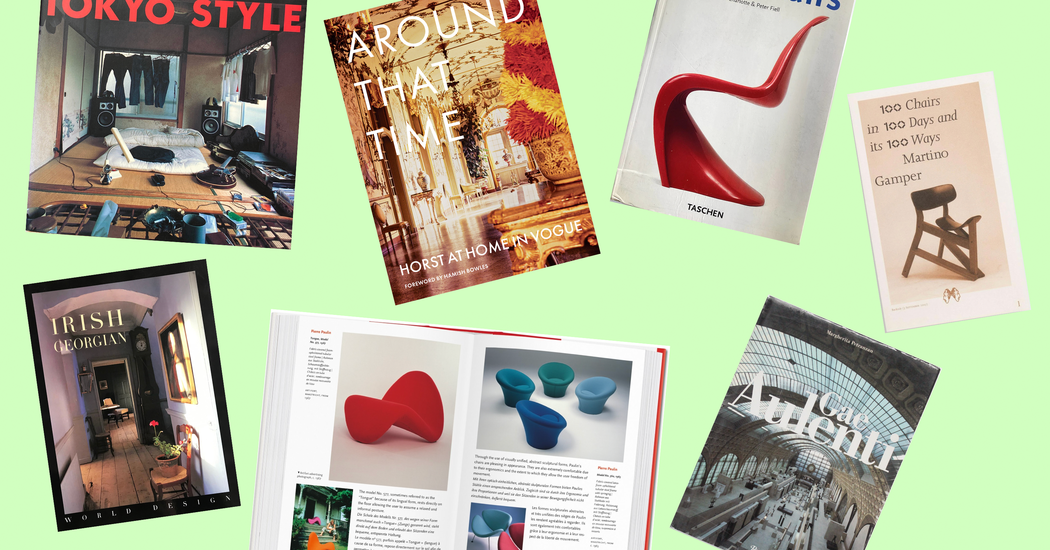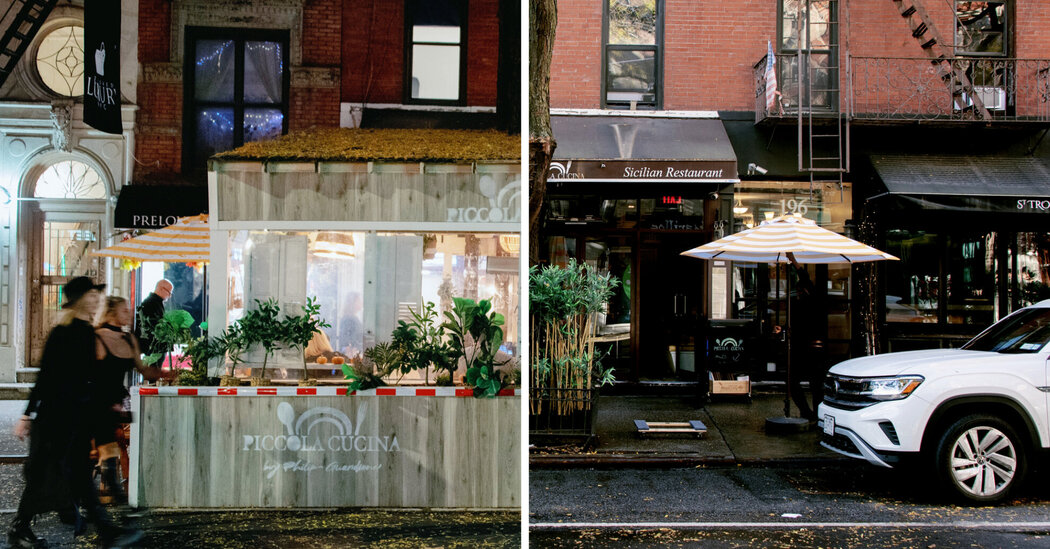In our very online era, design trends seem to bloom and wither faster than ever. Concepts that might at first strike us as unexpected can quickly be turned into clichés by algorithms. See: Zellige tiles or banana leaf wallpaper. One antidote to this rapid churn is, of course, more analog sources of inspiration, in particular books — the older and harder to find the better. So, we asked a handful of designers to each recommend a title, ideally a vintage one, that continues to offer up exciting ideas.
Brigette Romanek, 48, interior designer: “The Decoration of Houses” by Edith Wharton and Ogden Codman Jr. (1897)
In an era when women didn’t have full control over their lives, Edith Wharton found her voice through writing but also through decorating her home. I first encountered this book — which is hailed as the first modern design book — at the very beginning of my career, when I was still learning the craft. In it, Wharton outlines both the major historical design traditions and the then-new approaches to walls, doors, windows, ceilings, floors, fireplaces and open spaces, documenting a level of ornamentation that’s unfortunately been somewhat lost to history. The book is illustrated with mostly black-and-white photographs of European design from the 16th through 18th centuries; some much later printings include color photos. But what resonated with me are Wharton’s words. “The supreme excellence is simplicity,” she wrote. Her advice holds true to this day.
Charlotte Freemantle, 48, co-owner of the fireplace and furniture company Jamb: “Early Georgian 1715-1760” by Christopher Hussey (1955) and “Irish Georgian” by Herbert Ympa (1998)
Antique chimney pieces form the backbone of our company, Jamb. [My husband, Will Fisher, and I] sell them, but they’re also invaluable when it comes to making our reproduction fireplaces. [Christopher Hussey’s] “Early Georgian 1715-1760” is a compendium of magnificent Georgian rooms that shows many great chimney pieces within the , for which they were originally intended — for example at country houses such as Ditchley Hall in Oxfordshire. The other book we come back to again and again is [Herbert Ympa’s] “Irish Georgian,” which captures the faded grandeur, dry patinas and crumbling paint surfaces of rooms that are, of course, centered by a chimney piece. In the chapter on the Georgian townhouse there’s a particularly inspiring image of a simple marble surround that to our eyes today looks strikingly modern.
Rose Tarlow, 80, interior designer: “Inside Design” by Michael Greer (1962)
Back when I was a student at New York’s School of Interior Design, I attended lectures by prominent talents of the day, including the design maestro Michael Greer, who helped decorate rooms in the White House during the [Dwight D.] Eisenhower and [John F.] Kennedy administrations. Greer’s lectures were my favorite — he kept all of us enthralled with his outlandish dictates. Years later, when writing my first book, “The Private House” [which was released in 2011 and will be reissued in April], I drew inspiration from Greer’s classic text, which was full of his opinions on furniture (“The only reason to have built a bar at home is just to illustrate the fact that you can”), colors (he sorts them into three categories: “those the client can’t bear, those they can and those they prefer”) and decorating, all articulated in his distinctive voice. Although these days “Inside Design” may be considered rather old-fashioned, it still makes me smile. With lines like, “Without a border on a rug you don’t have a rug, you just have a piece of cloth,” how could it not?
Ruby Kean, 32, interior designer: “Charles Rennie Mackintosh as a Designer of Chairs” by Filippo Alison (1977)
A mini archive of some of the [late 19th- and early 20th-century Scottish designer] Charles Rennie Mackintosh’s finest work, this little book — I think we found it on eBay — is a true delight that Lisa [Jones, 37, Kean’s partner in the London- and New York-based design firm Atelier LK] and I never tire of poring over. Mackintosh is one of our heroes, an architect but also an interior designer and watercolorist who oscillated between the world stage and the tight-knit creative community of Glasgow. The book conveys the utter charm of his furniture’s forms and shapes. For instance, there’s his Chair With Low Back [a seat with a straight, angular latticed wood back]. It can’t be comfortable, but why bother with comfort when you’re designing a chair so striking?
Jared Blake, 34, co-owner of the furniture store Lichen: “Tokyo Style” by Kyoichi Tsuzuki (1993)
Kyoichi Tsuzuki’s book isn’t about polished, expensive homes orchestrated by interior decorators. It documents the very lived-in, sometimes chaotic apartments of ordinary people in Tokyo in the early 1990s, all maximizing every bit of square footage. The fly-on-the-wall style of the photography captures real scenarios. Nobody’s cleaned up. Maybe the coffee is still on the stove or there are socks on the floor. There are often books and record collections stacked to the ceilings. I love seeing homes in this very natural, personal and organic way.
Fabrizio Casiraghi, 37, architect: “André Arbus: Architecte-Décorateur des Années 40” by Yvonne Brunhammer (1996)
André Arbus, a French designer of the 1940s, is one of my favorites, a talent who maintained a discreet presence. I admire his seamless integration of mediums — painting and sculpture intertwined effortlessly with furniture pieces. Yvonne Brunhammer’s book, which I believe is the only monograph dedicated to his work, has offered a wellspring of inspiration for me. Every page features examples of his unusual approach, for instance how he would adorn the knobs of drawers with sculpted heads, turning functional elements into artistic expressions.
Sally Breer, 35, interior designer: “Gae Aulenti” by Margherita Petranzan (1997)
Growing up in the ’90s, I found a lot of the contemporary interiors around me stodgy. It was the irreverent, joyful architecture and decoration of the ’60s and ’70s — which I discovered through old books — that was my gateway to pursuing interiors. Margherita Petranzan’s monograph on Gae Aulenti was incredibly formative for me. Her work is ballsy, but grounded with a certain elegance. The book covers 40 years of her career, ranging from museum projects to industrial design, and I was astounded by her bravery in taking big creative swings without being intimidated by history. Her Musée D’Orsay [the Parisian museum she built in the early 1980s by converting a former train station] is a perfect example, but all her work balances respect for the past with the desire to create a version of it with the fat trimmed.
Cliff Fong, 54, interior designer: “1000 Chairs” by Charlotte and Peter Fiell (1997)
I was working in fashion but becoming deeply obsessed with collecting furniture when this book [by Charlotte and Peter Fiell] came out. I loved how it broke down the evolution of design in a very simple, chronological way. I was collecting pieces by Jean Prouvé, Jean Royère and Hans Wegner back then and the book helped put their work into context. But it also broadened my enthusiasm for different periods of design, including International style and Art Nouveau. If, like me, you love to collect chairs, this book is a perfect companion — it’s clear, compact and a boundless source of inspiration.
Kusheda Mensah, 32, furniture designer: “100 Chairs in 100 Days and Its 100 Ways” by Martino Gamper (2007)
This book documents a challenge the Italian designer Martino Gamper set for himself in 2006: creating 100 chairs in 100 days using discarded chairs he found on the street or in friends’ homes. It’s printed on beautiful paper and beautifully bound, which gives it a personal feeling, not unlike that of a diary. Gamper wasn’t striving to make a perfect chair — he was interested in the process. In one instance, he attached an inflatable pool float as a back rest for an existing industrial wood chair. Another chair is made from a bike frame. In my own work, I tend to procrastinate, always fretting about how an idea might be received and whether it’s good enough to exist. “100 Chairs” reminds me that all the questions I constantly ask myself will be answered if I just trust the process.
Alexy Kos, 40, interior designer: “Around That Time: Horst at Home in Vogue” by Valentine Lawford, Ivan Shaw and Hamish Bowles (2016)
Che [Huang, 38, my partner in the U.K.-based design firm Child Studio,] and I discovered this book in London’s Daunt bookshop about five years ago, when our practice was still focused on commercial projects. It’s a collection of interiors images and portraits that the German American photographer Horst P. Horst shot for Vogue in the 1970s and ’80s, featuring artists and designers. Oscar de la Renta’s opulent Manhattan apartment is presented next to the airy villa in Rome where Cy Twombly lived with his family. Karl Lagerfeld’s futuristic all-white Parisian residence is followed by Emilio Pucci’s sumptuous, frescoed palazzo in Florence. The images are incredibly atmospheric and all the interiors reflect the personalities of the creative people who live there. In fact, we were so inspired by the book that, soon after finding it, we began designing homes.







